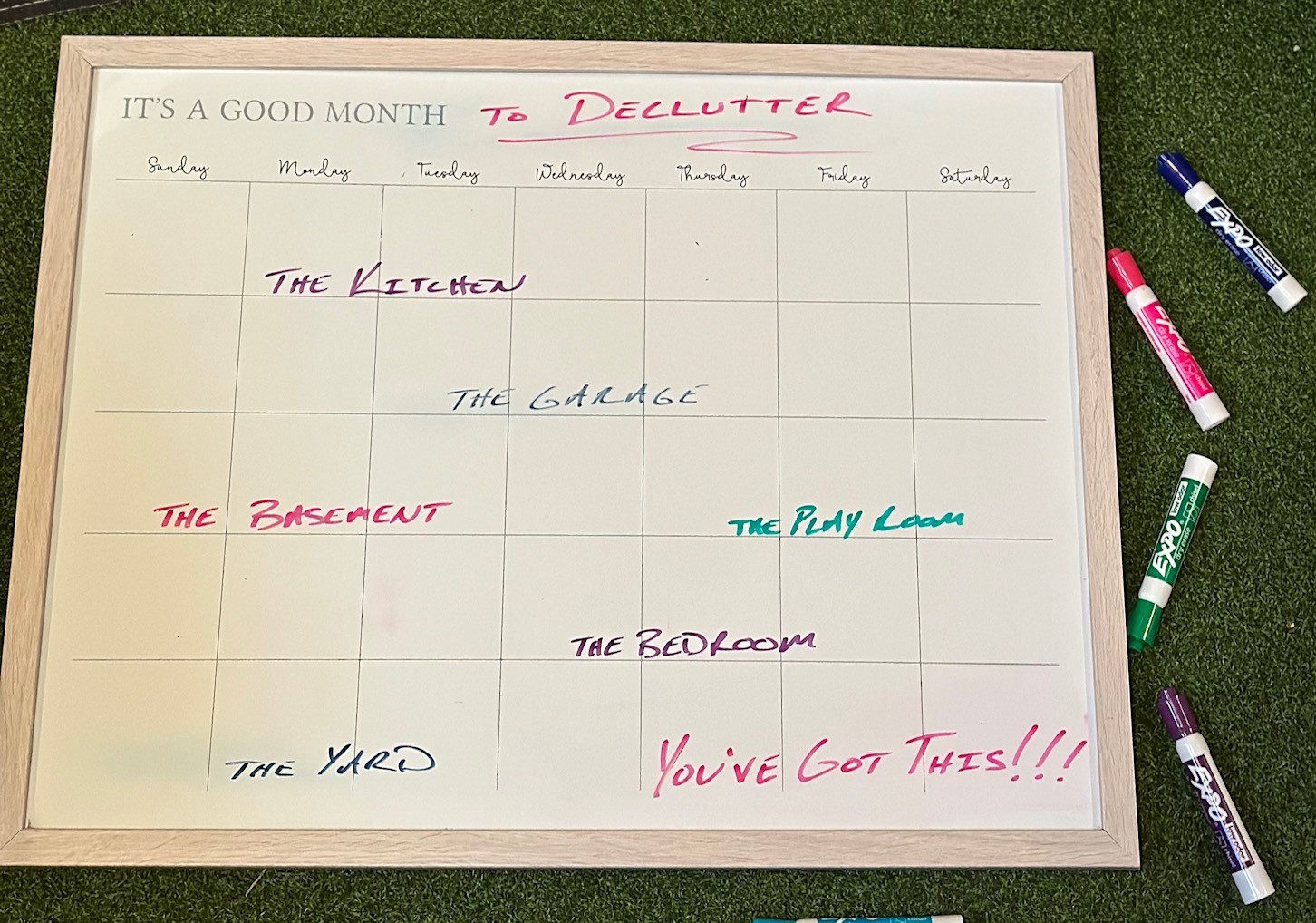
In our previous blog posting, Simple, Effective Approaches to Decluttering, we discussed simple, effective, low-stress approaches to decluttering your home. One of the approaches is using a “Decluttering Schedule”. In this post, we will dig deeper into this approach to help you make it an efficient and successful method of decluttering your home and getting back on track!
Setting a decluttering schedule can be a highly effective way to tackle the seemingly overwhelming task of organizing and decluttering your home. Having a clear plan and breaking down the process into manageable chunks can make the process more achievable and less stressful, while keeping you motivated.
Here’s an overview and tips on how you can set up a decluttering schedule:
- Assess Your Space: Before creating a decluttering schedule, take a thorough look at your home and identify areas that need decluttering the most. You might prioritize spaces that are causing the most stress or those that are frequently used.
- Set Realistic Goals: Be realistic about what you can accomplish within a certain timeframe. Overestimating can lead to frustration, while setting achievable goals will boost your motivation.
- Choose a Schedule: Decide how often you’ll dedicate time to decluttering. This could be daily, weekly, or a combination of both. The key is consistency.
- Time Blocks: Allocate specific time blocks for decluttering sessions. This could be 15 minutes, 30 minutes, or even an hour. Set a timer to help you stay on track and prevent burnout.
- Start Small: Begin with smaller areas or tasks to build momentum. Completing these smaller tasks can give you a sense of accomplishment and motivation to tackle larger areas.
- Categorize Areas: Divide your home into different areas or categories (e.g., closet, kitchen pantry, garage, etc.). Instead of trying to declutter your entire home in one go, rotate your focus. Focus on one area during each decluttering session to avoid feeling overwhelmed. For example, you could dedicate one week to the living room, the next to the bedroom, and so on. It could look something like this:
Day/Week 1: Kitchen appliances and cookware
Day/Week 2: Kid’s toy room
Day/Week 3: Office and paperwork
Day/Week 4: Seasonal décor
Day/Week 5: Bookshelves & reading material
Day/Week 6: Bedrooms
- Theme Days: Assign specific themes to different days of the week. For instance, you could have “Paperwork Wednesday” where you focus on organizing documents and paperwork. Or you could have “Closet Tuesday” where you focus on a closet or closets.
- Monthly Overhaul: Once a month, set aside a larger block of time to tackle a more intensive decluttering session. This is when you can dive into more challenging areas like the garage or attic.
- Seasonal Decluttering: Consider doing a more thorough decluttering during season changes. This is a great time to assess and switch out seasonal clothing, decorations, and items.
- Maintenance Schedule: Once you’ve completed your initial decluttering, establish a maintenance schedule to prevent clutter from building up again. Regularly revisit and tidy up spaces.
Remember, the goal of a decluttering schedule is to create a sustainable and organized living environment. Experiment with different methods to find what works best for you. Then, adapt the schedule to your situation and preferences, and don’t be too hard on yourself if things don’t go perfectly. Consistent effort, even in small doses, can lead to significant improvements over time.
Here are some additional tips for creating a declutter schedule:
- Consider your lifestyle. When creating your declutter schedule, take your lifestyle into account. If you have a busy schedule, you might want to declutter on the weekends or in the evenings.
- Be flexible. Don’t be afraid to adjust your declutter schedule if needed. If you have a busy week, you might need to declutter for less time or less often.
- Get help. If you’re struggling to declutter on your own, ask for help from friends or family members. They can help you to stay motivated and on track.
- Use a decluttering checklist. This can help you to stay on track and make sure that you’re decluttering all the important areas of your home.
- Set deadlines for yourself. This will help you to stay motivated and make sure that you’re decluttering on a regular basis.
- Don’t be afraid to get rid of things. If you haven’t used something in a year, it’s probably time to get rid of it.
- Recycle or donate items. This is a great way to give your unwanted items a new life and help the environment.
Remember! Decluttering your home doesn’t have to be a daunting task! By following these approaches and tips, you can make the process simple, rewarding, and more enjoyable.
We hope this helps and sets you on a path to less stress and a decluttered home! Please contact us if you have any questions or need any assistance!
“Less Clutter – Less Stress. Make your space a Simple Space.”